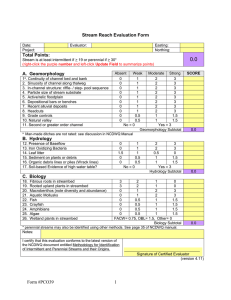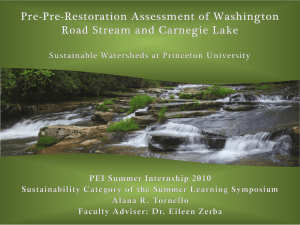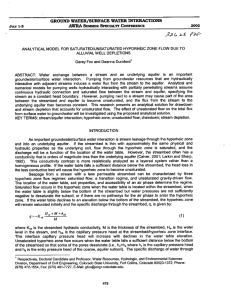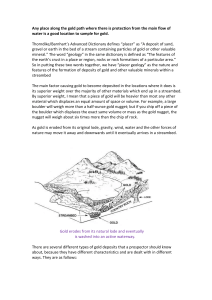Garnet Abrams Faculty Advisor: Dr. Eileen Zerba Princeton Environmental Institute Summer 2010
advertisement
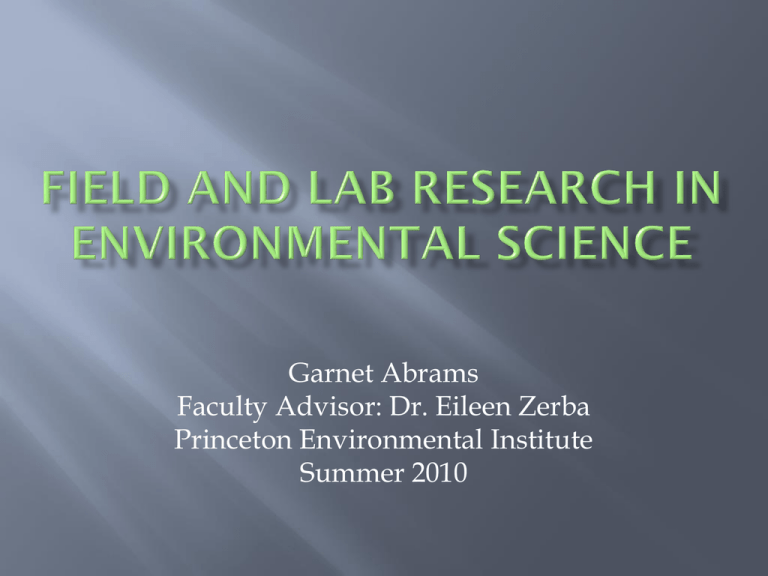
Garnet Abrams Faculty Advisor: Dr. Eileen Zerba Princeton Environmental Institute Summer 2010 Nutrients – Nitrogen and Phosphorous YSI – Temperature, pH, salinity, turbidity, dissolved O2, chlorophyll, and blue-green algae Primary inputs – Stony Brook and Millstone River Smaller inputs – Elm Stream, Washington Stream, storm drain networks Dillon pool filters backwashed into Elm Stream and Lake Carnegie Chlorine tolerance of different species Installation of UV filtration system will reduce chlorine concentrations in backwash Construction of new chemistry and neuroscience buildings alters nutrient levels and turbidity Urban watershed results in quick and high flood peaks. Also increases pollution stored in and on the ground that is concentrated in initial rain events Primary objective to redirect the stream from undercutting Washington Road Secondary to build a healthier environment that will be better able to filter pollutants and recycle the high nutrients into the ecosystems instead of concentrating in Lake Carnegie Adding meanders lengthens stream and slows current Diversifying ecology Altering streambed to incorporate more step-pools Blue – bedrock Green – boulders Yellow – mixed large gravel and boulders Orange – mixed sand and large gravel Red Lines - Undercutting Current streambed is unstable in a state of transition and reconfiguring its floodplain Upper narrow, steep, and straight run extreme focus of restoration

